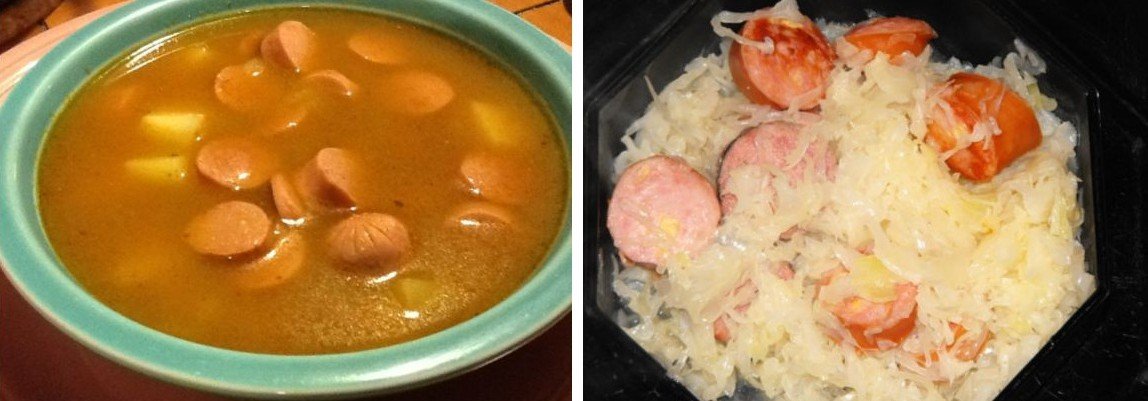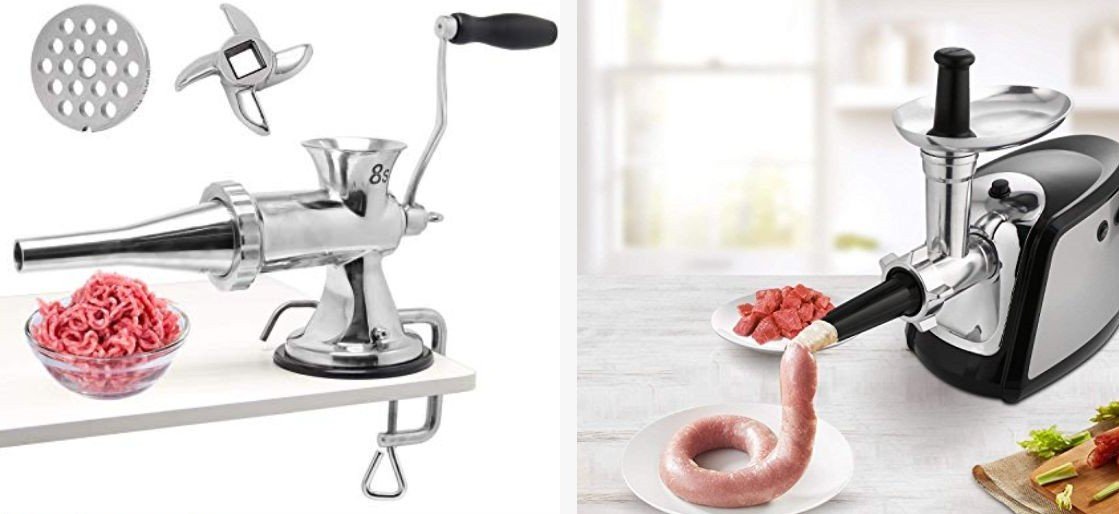Sausages are a meat mixture (real or mystery meat with fat and fillers) that is usually stuffed in a casing and tied off or twisted to make links. Natural casings are made of animal intestine and are edible.
There are hundreds of different sausages. see: Wikipedia
I have eaten or prepared only a dozen or so on that list.
cured / dried sausages

Pic1: hanging to dry
Pic2: charcuterie plate
boiled sausages

Pic3: hot dogs in potato soup
Pic4: various smoked sausages in sauerkraut
Cured sausages may be either cooked or dried. Many cured sausages are smoked, but this is not mandatory. The curing process itself changes the meat and imparts its own flavors, similar to the difference in taste between pork roast and ham. I buy these at the butcher or the grocery store.
My parents made these a few times. I never have and likely never will.
2. Precooked / Smoked Sausages
Many sausages (
hot dogs, frankfurters, bologna, mortadella, boudin, and many German-style
"wursts") and/or smoked (e.g.
andouille and
kielbasa) are precooked during the production process for food safety reasons and to increase the shelf-life of the product.
Most will be cooked again - or at least heated through - when being prepared. They may be poached, but are often pan-fried or roasted / grilled for extra flavor.
The one exception here is liverwurst, a highly-processed sausage that is pasteurized commercially for cold consumption, usually with bread.
Liverwurst can be pan-fried of course, but I have never tried it.
3. Raw sausages
You can find raw sausages at your local butcher or grocery store; or you can make them yourself. You can make your sausages coarsely ground with or without fillers or very finely ground pure meat.

Pic5+6: raw sausage links
 Pic7: hand-crank meat grinder
Pic7: hand-crank meat grinder
Pic8: electric meat grinder
pictures below borrowed from THIS PAGE
 Pic9: grind the meat
Pic9: grind the meat
Pic10: wash the casings
Pic11: fill the casings
 Pic12: keep going
Pic12: keep going
Pic13: make links
Pic14: hang to dry


 Pic5+6: raw sausage links
Pic5+6: raw sausage links Pic7: hand-crank meat grinder
Pic7: hand-crank meat grinder  Pic9: grind the meat
Pic9: grind the meat Pic12: keep going
Pic12: keep going